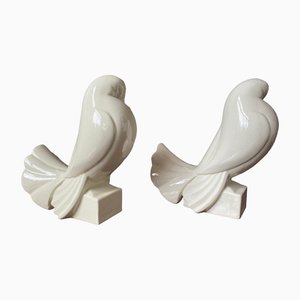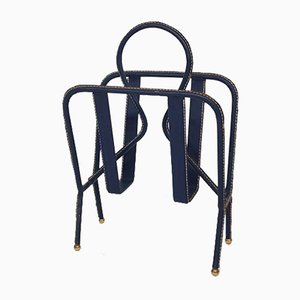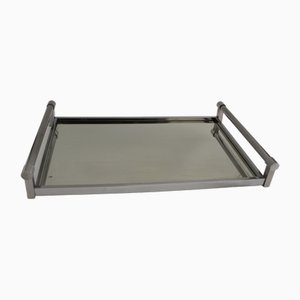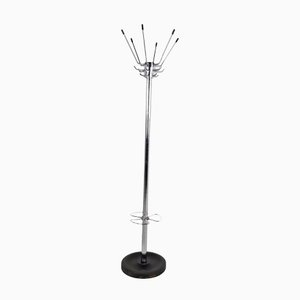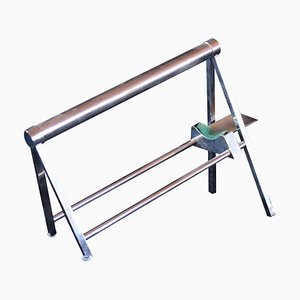
Born in 1900 in the region of Bourgogne, Jacques Adnet was a French architect and interior designer who defined himself as “innovative and classic; the champion of a tradition looking into the future.” Although he’s most often associated with the Art Deco style, Adnet’s commitment to functionalist principles and his propensity for pared back forms positions his work under the modernist umbrella as well. Other stylistic terms applied to Adnet’s work include “streamline modern” and “machinisme.” In his lifetime, he was considered to be one of France’s foremost avant-garde design geniuses.
Together with his twin brother Jean, Adnet trained at Paris’s École Nationale Supérieure des Arts Décoratifs, starting in 1916. After World War I, in the early 1920s, the brothers worked together for Maurice Dufrène at La Maitrise, the workshop of Les Galeries Lafayette department store. Around the same time, they set up their own design firm, JJ Adnet.
In 1925, JJ Adnet presented furniture and lighting at the Exposition Internationale des Arts Décoratifs et Industriels Modernes—the landmark event that gave us the term Art Deco—and the brothers’ careers began to take off. The following year, they were commissioned to design the salle commune of the Ile-de-France ocean liner.
In 1927, the brothers’ paths diverged: Jean was appointed artistic director of Les Galeries Lafayette; Jacques took the role of design director for Süe et Mare’s Compagnie des Arts Français (CAF)—a position he would hold, with great acclaim, until 1959.
During his time at CAF, Adnet gathered around him a team of artists, ceramists, coppersmiths, and designers who shared similar approaches; notable collaborators included Francis Jourdain, Georges Jouve, Serge Mouille, Alexandre Noll, and Charlotte Perriand. In the 1930s, Jacques’s work took on increasingly modernist characteristics, including the use of tubular steel, lightweight forms, and minimal ornamentation—even as he continued to embrace lux materials like leather, rosewood, and brass.
In 1948, Adnet became the President of Le Salon des Artistes Décorateurs. Also in the late ’40s, he began a decade long relationship with Hermès, designing high-end, leather-clad furniture. When the La Compagnie des Arts Français closed in 1959, Adnet became the director of the École Nationale Supérieure des Arts Décoratifs.
Adnet’s standout designs include his Quadro VII Lamp (1929), which went into production in Italy only in the late 20th century, and his Circulaire Mirror (1950), originally produced by Hermès and now produced by Gubi. Adnet’s high-profile interiors projects, created between the late 1940s and late 1950s, include the renovation of French President Vincent Auriol’s private apartments at the Palais de l’Elysée and spaces in Chateau de Rambouillet, Rivera Casino owner Frank Jay Gould's house, French actress Alice Cocea's apartment, Paris’s UNESCO headquarters, and a number of luxury ocean liners.
Jacques Adnet passed away in 1984.

